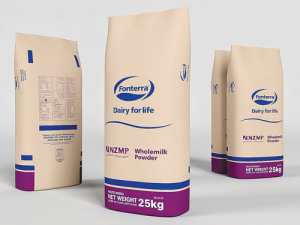In its latest Situation and Outlook report update, the Ministry for Primary Industries is predicting dairy export revenue will rise 18.5% to $17.3b for the year ending June 2018. This is close to the record season of 2014 when dairy exports earned $17.7m. But since then earnings have dropped to the levels of 2013 and 2015.
Various factors which have led to this comeback in prices, says MPI’s director of sector policy Jarred Mair. He points to New Zealand pitching its products to the top end of the market and making more cash from value add.
Mair says NZ is seen as producing food that is natural and unprocessed, which appeals to consumers at the top end of the market. The value add may not necessarily be in further processing, but in the natural way we produce our food products, he says.
“Admittedly some of the milk powders can be seen as a commodity and also some of our cheaper cuts of meats But NZ as whole is not doing too badly in both price and mix of products. We are seeing a lot more products starting to come through in higher value market capacity and that is beneficial for NZ,” he says.
Worldwide the demand is rising for butter and other fat products; Europe is short of butter, a far cry from the ‘butter mountains’ of the late 1970s and early 1980s. Butter prices have continued to rise over the past three months and this is helping to cushion the drop in the price of milk powders.
“We are seeing great demand for butter in Asian countries which great for us. They are looking for more personal, natural nutrition and butter fits that criteria. There is also a demand for the products the butter is going into such as baked goods,” he says.
MPI is expecting WPM prices to remain relatively stable over the next two years because the supply and demand dynamics appear to be balanced.
The report notes the impact of the bad weather in the 2016-17 season which caused a small drop in overall production. MPI predicts production will rise by 2.2% this season over last which will also boost the overall export returns.
But there is a warning that this season’s boom is unlikely to continue into the next season and dairy export returns are expected to remain static.
Mair says he doesn’t see a risk for NZ’s increasing trade with China which takes 24% of our primary products and is by far the biggest market for our dairy products (25%).
“It’s juggernaut in its own right. It just continues to grow and we are a long way from exhausting that market. It’s not matured yet. However I think we will see greater balancing out.”









